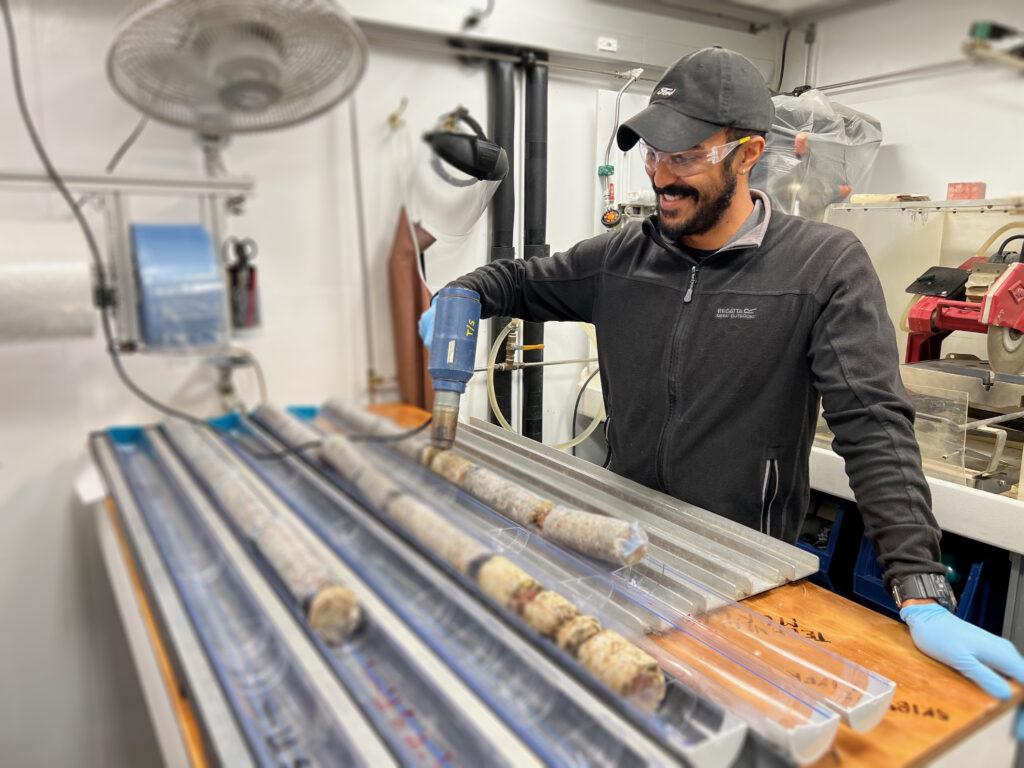
Science at Sea – not all core cuts the same
To increase accessibility to our expedition, click to listen to the page text read aloud.
When we drill through oceanic basement material, we bring 9.5 meter (31.16 foot)-intervals of core up to JOIDES Resolution, complete some initial physical property analyses, then split the core in half for archive and sampling purposes. Sounds like a simple enough process, right? But splitting the length of a core in half that is 5.87 cm (2.312 inches) in diameter is not always “cut and dry”.
For example, we have intervals of brecciated material in some of our core on this expedition. To have a brecciated texture in a rock means that the rock is composed of angular, broken fragments of pre-existing minerals and rocks that are cemented together. If the cement is not strong, then we need to be careful with our splitting procedure so we do not break apart the entire core we’ve just pulled up from the deep sea!
To safeguard the core from disintegrating on the splitting table, our first step is to place the core in a plastic sleeve and heat shrink wrap. Aidan Leetz, thin section technician, demonstrates this procedure in the following series of images.
After we used the heat gun to shrink wrap the pieces, we are now ready to split the core. Imaging specialist Sandra Herrmann takes us through the splitting process and shows how the sample holds together. (*Note there is no audio in the following video)
Of course, we do have some basement material is this well-cemented that we can use a MK-101 wet saw with a diamond saw blade to cut core pieces in half.
Once the core has been split, each rock piece is left to completely dry. Next, a small label is attached with epoxy, noting which section of core and location within the core it belongs. The label also has an arrow pointing in the up direction for the top of the piece. This helps everyone keep track of the correct sequence of material. In geology, we use the Law of Superposition when looking at samples from back in geologic time. This means that the oldest material is on the bottom of the sequence, and the youngest material is on the top.

Now, the cores are ready for description and sampling, thanks to the extra step of a heat shrink wrap to ensure we have core material to work with!
To learn more about how cores of soft sediments are split, see this blog post from Expedition 354, Splitting Core…and Peering Back in Time.

